One of the most challenging parts of launching an online store is building trust with website visitors.
When a new customer lands on an ecommerce website they’ve never been to, one of the first questions they’re going to ask is, “is this company legitimate?”
And who can blame them?
There are millions of ecommerce stores to choose from when shopping online, some of which are downright sketchy.
If you’re struggling with high bounce or low conversion rates, your ecommerce site might benefit from adding trust signals.
Ecommerce trust signals are social proof elements on a website that demonstrate the legitimacy of a business.
In this article, we’ll cover 10 ecommerce trust signals that can help build trust with your audience.
SSL Certificate
The very first trust signal that every website should have is an SSL certificate. When launching an ecommerce business, this is the bare minimum. According to HubSpot:
SSL certificates are a small data files that cryptographically establish an encrypted link between a web server and a browser. This link ensures that all data passed between the web server and browser remain private.
Some browsers, like Google Chrome, block unsecured sites automatically. So, if you don’t have an SSL certificate, you are setting yourself up for failure.
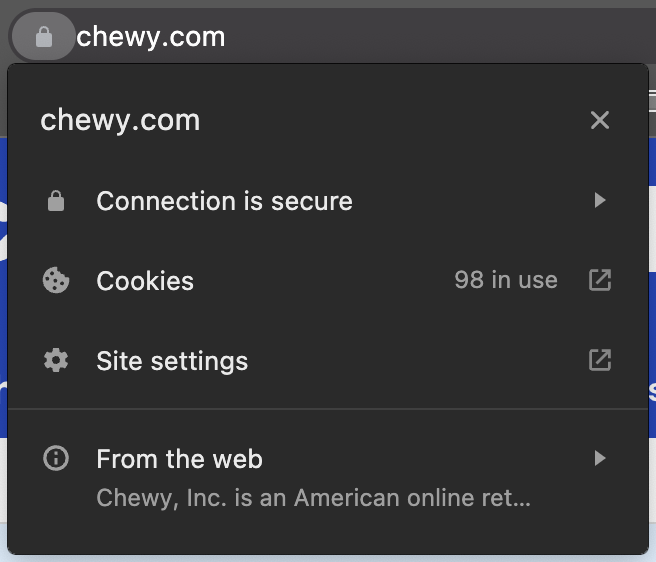
Shopify sites are secure by default, but if you are having issues, check out this help article. If your store is on another platform, like WordPress, you must work through your hosting provider to set up your SSL certificate.
Customer Reviews
After your SSL, the next trust signal that website visitors will notice is customer reviews. According to powerreviews.com, 97% of consumers say customer reviews influence their online buying decisions.

Customer reviews should be easy to find on every single product page. You can also use some of your best reviews on your homepage or other landing pages to build customer trust.
And don’t think you can get away with fake reviews. Savvy customers can spot fake reviews from a mile away.
Related: 7 Ways to Get Customers to Leave Reviews for Your Store
Third-Party Reviews
Nothing provides validation like an expert review. Reviews from a third party, like a tech site or fashion blogger, is a great trust signal that shows that well-respected writers and journalist like your products.
We’ll be honest; getting third-party reviews is difficult—you’ll probably have to send out hundreds of emails and mail product samples. But the cost is worth it if you struggle to capture customer trust.
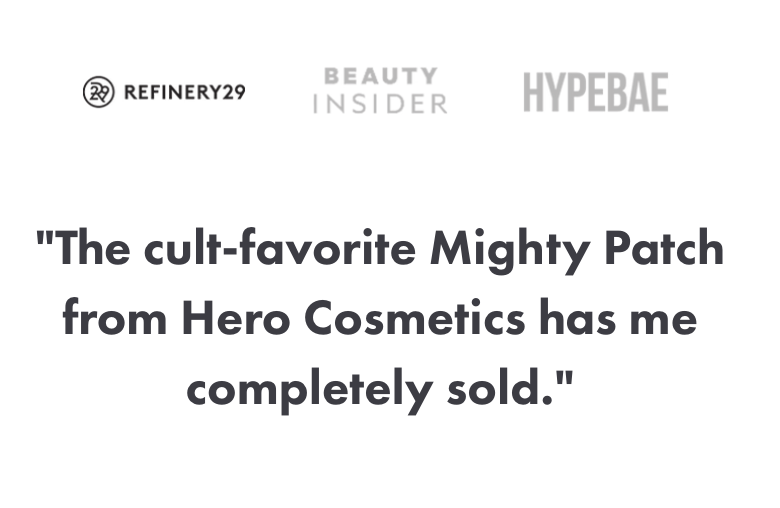
To find potential reviews, look at your competitor’s backlink profile or search Google and YouTube for “[competitor name] reviews.” You should be able to quickly find reviewers who are writing about products in your niche. Some reviewers, like Marques Brownlee for example, have made very successful careers by providing expert third-party reviews.
Social Media Links
Providing links to your social media accounts tells customers, “hey, we’re a real company that interacts with real people!” You don’t need to place these links everywhere; adding icons to your footer should be enough. The platforms you maintain should align with your audiences. For example, if you are targeting business professionals, you might want to maintain a LinkedIn profile. Conversely, if your target audience is full of young people, maybe TikTok is right for you.

Remember, this only works if you are regularly posting on your accounts. Sending people to a Facebook page that hasn’t been updated since 2016 probably does more harm than good.
Testimonials
Testimonials are very similar to reviews. However, customer testimonials are more detailed and are provided directly to the company (as opposed to reviews left anywhere on the internet). In a testimonial, a customer vouches for a company and/or product.
For a real-life example, a review is like telling a friend you like them. In contrast, a testimonial is like going in front of a judge as a character witness.

You’ll often see customer testimonials in cosmetic or pharmaceutical commercials with the disclaimer letting people know the people in the commercial are “not paid actors” and are “actual customers.”
Case Studies
A case study takes a testimonial even further. A case study is a detailed report of a customers interaction with a company and typically covers three areas:
- The problem a customer is trying to fix.
- The company/product’s approach to fixing that problem.
- The results from using said company/product.
Case studies are widespread in B2B digital marketing campaigns but can also be applicable to DTC campaigns. Since they are more in-depth, creating case studies involves working closely with the customer (and sometimes hiring content marketing experts to help write them).
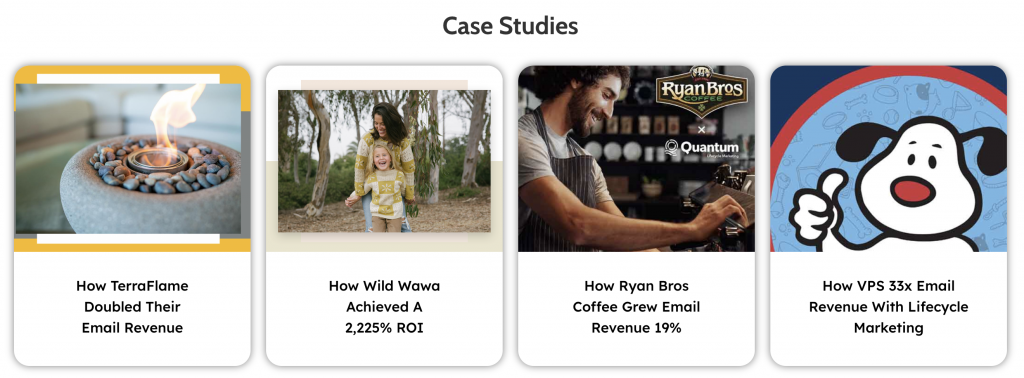
Check out Quantum’s Case Studies for some examples.
Payment Assurance
Payment assurance is a trust signal that highlights the trustworthiness of your payment processing system. For example, ecommerce websites often use “trust badges” or “trust seals“ to assure potential customers that their credit card information is safe and secure. In this instance, a trust badge can be icons from payment processors like Visa and Paypal.
Another method is to offer different payment methods when someone is looking at their shopping cart. Here’s a perfect example from Huckleberry Roasters:
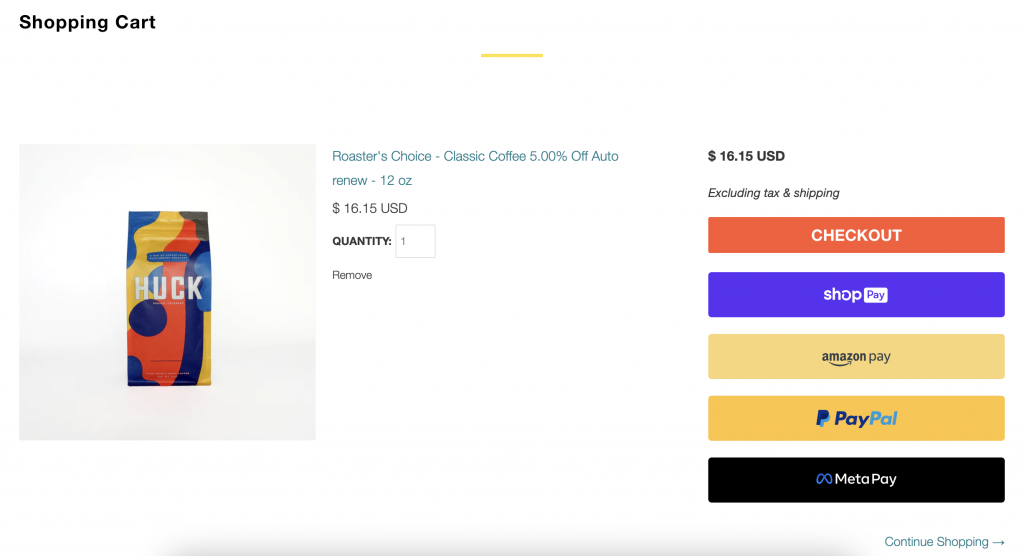
Contact Page
A contact page is another simple trust signal that shows your online shoppers that you are a real company with real people working there. Contact information should include a phone number (that actually works) and a physical address (a PO Box is acceptable).
It is important to note that you need to be mindful of your responsiveness. For example, if your phone number or email address is publicly available, you better be prepared to respond to inquiries.
Transparent Return Policy
Providing a quality user experience is paramount to gaining consumer trust. And when we say user experience, we don’t just mean your website design. We’re talking about the entire interaction with your brand. One significant component of customer interactions is returns.
Customers often look at return policies before purchasing online from a new retailer. First, make sure your policy is easy to find by placing it in the footer of your website. After that, make sure your policy is easy to read and understand.
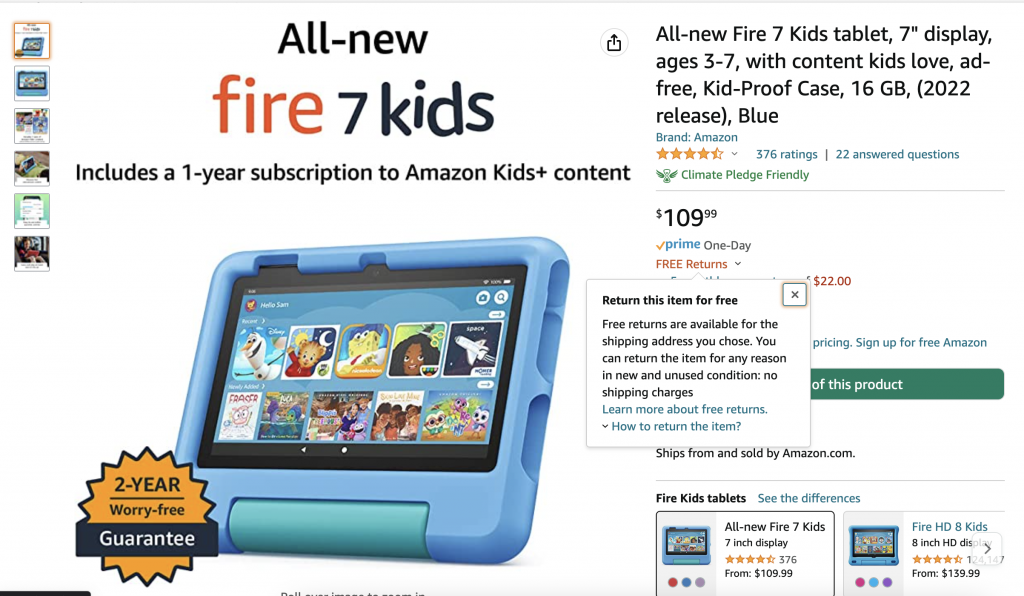
Burying your policies in hard-to-find places is a huge red flag. Amazon understands the importance of return policies—so much so that they include their return policies directly under the price of a product.
Statistics
Sometimes, it’s best to let the numbers do the talking. Providing statistics is a great way to show customers that your product performs as it should.
Not sure what statistics to show? An easy way to start is to look at your reviews. For example, you could say that 98% of customers give you a 5-star rating.
You can also share statistics that compare your product to a competitor. For example, you could say that your product has “20% more caffeine than [competition name]” or “performs 50% better.”
A word of caution: if you use statistics, ensure you have the data to back it up.
Online retailers can’t rely on word of mouth to build trust. Trust signals are essential to building a brand that people view as respectable and legitimate. By adding these 10 trustmarks to your website, you can start building trust with your customers.
